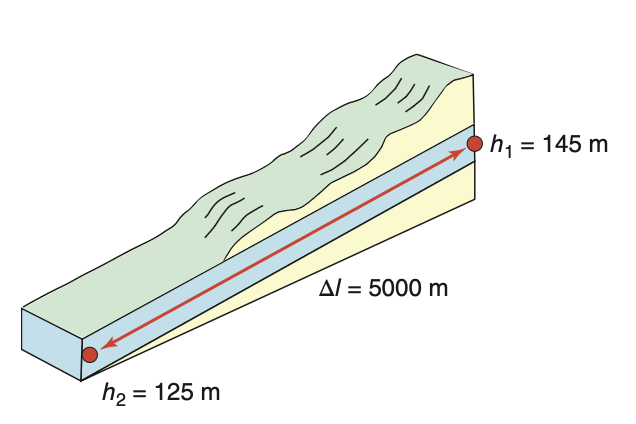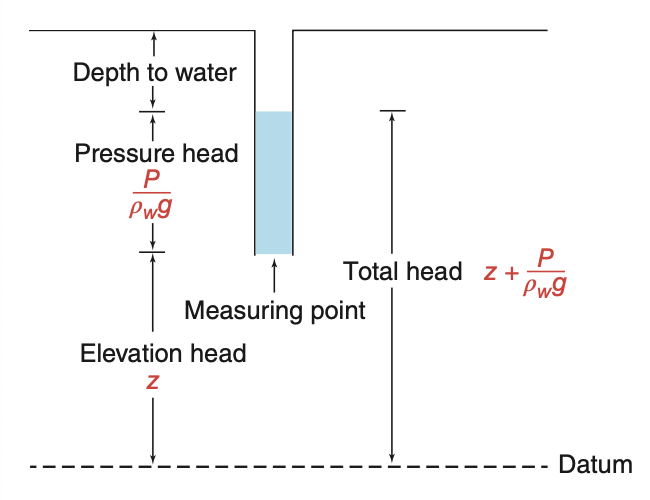
- / -
Tutorials
Groundwater
Consider a simple flow system with a dipping aquifer as shown in the figure below. Two piezometers have been installed at different elevations on a hillside (points 1 and 2), where point 1 is located at the top of the hill and point 2 at the bottom. Monitoring data shows that the volumetric flow rate entering the aquifer at the top equals the flow rate exiting at the bottom, indicating no net recharge or discharge along the hillslope.

Given data:
Tasks:
a) Determine the direction of groundwater flow in this system.
b) Calculate the hydraulic gradient between the two measurement points.
c) Identify where groundwater flow exits this system.
Building on the hydraulic gradient calculated in Problem 1 (i = 0.004), we now want to determine how fast groundwater actually moves through different types of aquifer materials. Laboratory analysis has determined that the hydraulic conductivity of this aquifer is
Given data:
Tasks:
a) If the aquifer consists of granular porous medium with a total porosity
b) If instead the aquifer is a fractured shale with the same hydraulic conductivity but different porosity characteristics (total porosity
You are working as a hydrogeologist and need to analyze data from a piezometer installation. The piezometer has been installed at a site where the ground surface elevation is 1000 m above sea level. Field measurements show that the water level in the piezometer is 25 m below the ground surface, and the total length of the piezometer (depth to measurement point) is 50 m.

Given data:
Tasks:
a) Calculate the total hydraulic head at the piezometer measurement point (bottom of piezometer).
b) Determine the pressure head at the measurement point.
c) Calculate the absolute pressure at the measurement point, expressing your answer in Pascals.
A geotechnical engineering firm has conducted hydraulic testing on a saturated soil sample and determined its hydraulic conductivity to be 15.24 m/day under standard laboratory conditions. You need to determine the intrinsic permeability of this material, which is an important parameter for comparing the flow characteristics of different porous media regardless of fluid properties.
Given data:
Task:
Calculate the intrinsic permeability
You are investigating groundwater flow through a sedimentary sequence consisting of interbedded sandstone and shale layers. Core drilling and geophysical logging have revealed a 300-m thick sequence where sandstone comprises 75% of the total thickness. Laboratory permeability tests show that the sandstone layers have isotropic hydraulic conductivity of
Field observations using tracer tests indicate that groundwater in the sandstone layers flows at an angle of 45° from the vertical direction as it approaches the sandstone-shale boundaries.
Given data:
Tasks:
a) Calculate the equivalent horizontal hydraulic conductivity
b) Calculate the equivalent vertical hydraulic conductivity
c) Using principles of flow refraction, determine the flow direction in the shale layers when groundwater crosses from sandstone at the observed 45° angle.